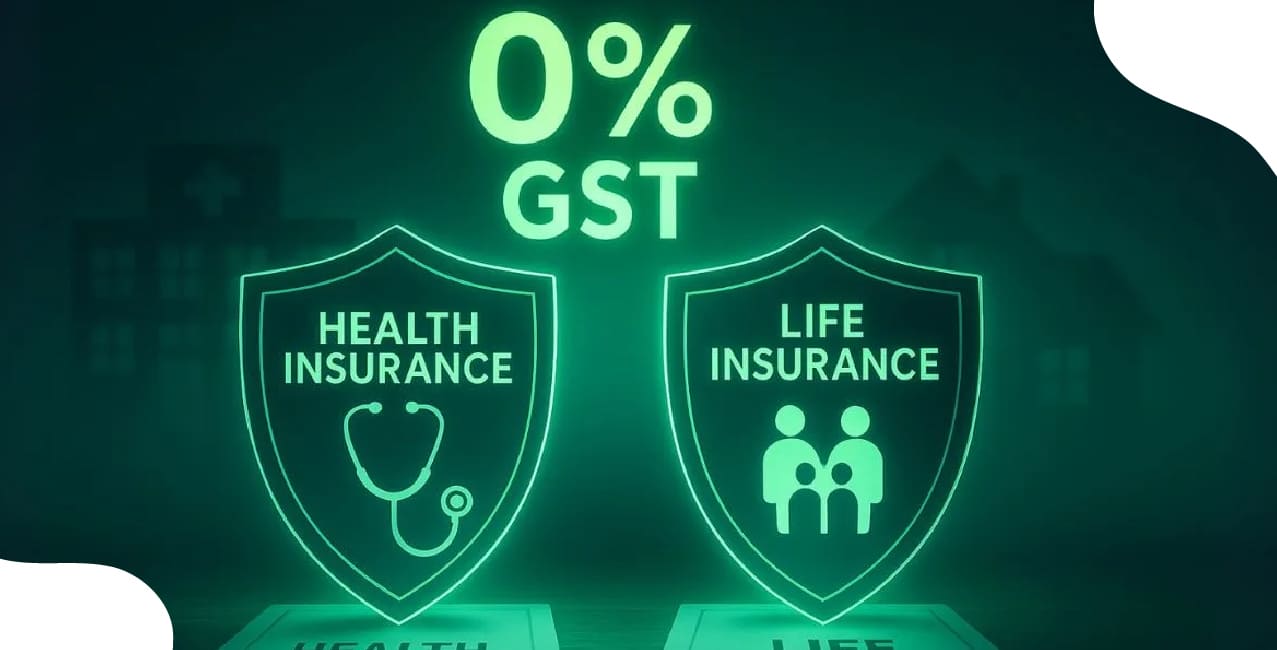Tax relief brings new hope for individual policyholders in 2025
Can a family save more money on insurance without cutting cover? That question has guided a major policy shift in September 2025. The Union Government announced that all individual health and life insurance premiums will now carry zero Goods and Services Tax.
For years, policyholders paid 18 percent tax on premiums. With the new decision, insurance is set to become affordable for the middle class, senior citizens and young earners alike.
Zero GST Impact On Health Insurance India
The 56th GST Council meeting in September 2025 cleared the exemption. Health insurance policies for individuals, including family floater and senior citizen plans, now fall under zero tax. The new rule is in effect from 22 September 2025.
Government data shows that in the financial year 2023-24, GST collections on health insurance premiums stood at ₹8,263 crore. This exemption removes that entire burden from households. Reinsurance of health policies is also exempt, which helps insurers lower embedded costs.
The table makes the change clear. All individual categories, across age and family size, are covered. This reform directly reduces premium outgo for every retail health buyer.
Life Insurance Premium Tax Exemption India
Life insurance buyers are also part of this relief. Term, endowment and unit linked insurance plans (ULIP) for individuals are now exempt from GST. According to the Department of Financial Services note in September 2025, renewals after 22 September qualify. Premiums paid earlier remain taxed.
Riders such as accidental death benefit and critical illness are also exempt when attached to individual policies. Group life policies offered by employers remain under 18 percent tax.
The table shows how wide the exemption spreads. Individual buyers are the direct beneficiaries. Group policies continue under tax, leaving out many salaried workers covered by employers.
Government Policy Boost For Health Insurance
The exemption is part of a larger reform called “GST 2.0”. The Council cut tax rates on medicines, medical kits and devices. Thirty-three life saving drugs and diagnostic kits are now nil rated. Medical devices such as oxygen cylinders, gloves and thermometers are now at 5 percent. Vision care products including spectacles and lenses are also at 5 percent.
In the financial year 2023-24, GST collected from life insurance premiums was ₹8,135 crore. Reinsurance brought in another ₹2,045 crore. The total revenue collected on life and health premiums crossed ₹16,000 crore. By exempting these, the government gives up revenue but gains wider protection for citizens.
Medical Sector GST Change
This package aligns tax with healthcare goals. Lower medicine bills reduce hospital charges. Lower GST on insurance premiums improves access to coverage. Together they make healthcare finance easier in 2025.
Affordable Life And Health Insurance India 2025
A Reuters report in August 2025 estimated that exempting insurance premiums could cost the exchequer nearly ₹97 billion each year. The Free Press Journal reported that the government collected ₹16,398 crore on insurance premiums in 2023-24. This gives a scale of the relief now extended to households.
Our earlier article in July 2024 on financial inclusion pointed to the rising burden of medical costs and weak insurance coverage in India [link]. The current exemption answers that concern. It creates space for more families to take health cover and increase life protection.
Revenue Impact Of Insurance GST Exemption
This data shows the scale of fiscal trade-off. The government is ready to sacrifice short term tax income for long term coverage growth.
Benefits Of Zero GST On Insurance Policies
There are both direct and indirect benefits of the decision. Consumers see premiums without the tax load. Insurers save on reinsurance and administrative GST costs. The larger health sector also sees gains through cheaper medicines, diagnostics, and devices, since lower input costs help downstream pricing.
Still, there is a debate. Once insurance becomes exempt, insurers lose the ability to claim input tax credit (ITC) on their expenses, which may raise their cost base. Many industry voices caution that some of this added cost could pass through to customers via higher base premiums. Even then, the removal of 18 % tax offers immediate relief to households.
In earlier years, the government and banks reacted differently to stress points. For instance, when banks faced a surge in non-performing assets around 2017, the Reserve Bank tightened lending norms to rein in excesses. The new GST exemption, in contrast, reflects a softer regulatory stance: rather than throttling demand, it seeks to broaden access by reducing tax burdens. This contrast underscores a shift in how policy across the financial and social sectors is being crafted.
According to LoansJagat’s “GST on Insurance – Updated Guide on Tax Rates & Applicability”, under the proposed exemption, insurers would no longer be eligible to claim input tax credit, thereby increasing their operational costs and potentially affecting pricing strategies.
Conclusion
The exemption of GST on health and life insurance premiums is one of the most direct tax cuts for households in 2025.
It changes the price of insurance, the shape of health costs and the balance of government revenue. It also underlines a policy shift towards affordable protection. With zero GST, families may finally see insurance as a daily need rather than a luxury.
Other News Pages | |||
J&K High Court Imposes ₹50,000 Fine — Must-Read for Borrowers | |||





